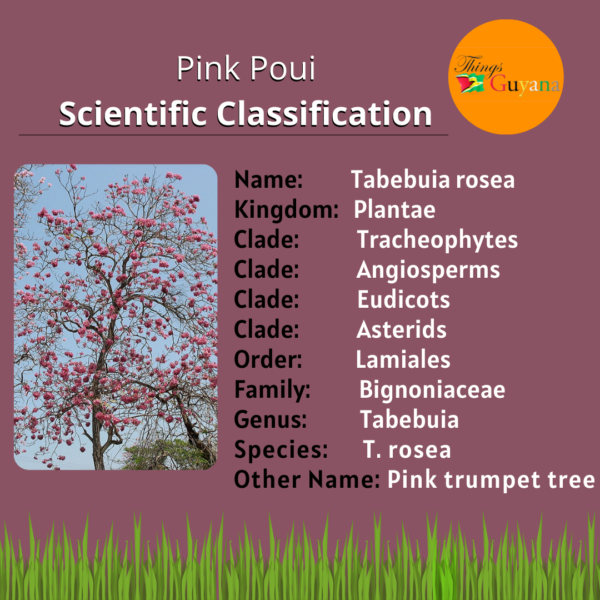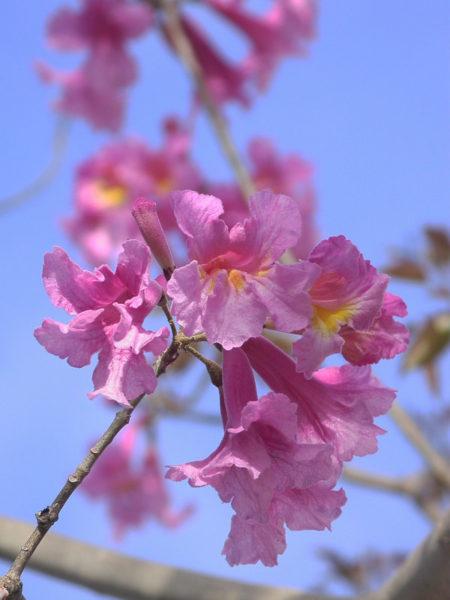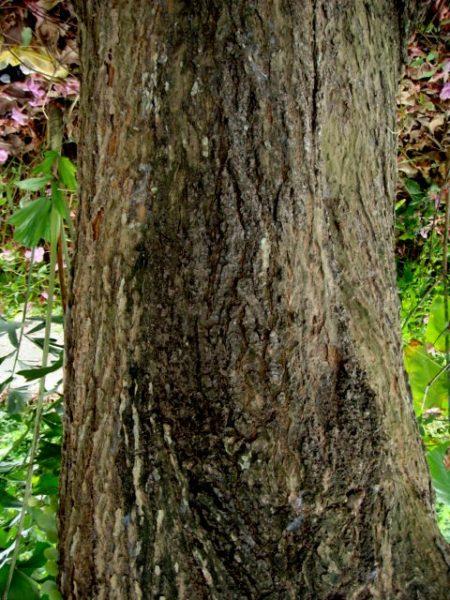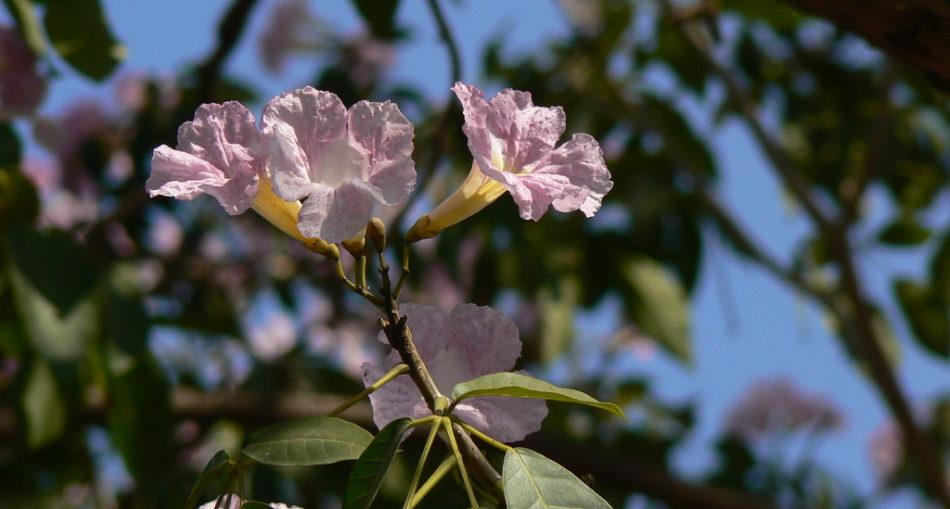I have mistaken these trees for that the cherry blossom trees and I bet some of you have as well. These plants are native to Central America and are known as ‘Pink Poui’. Their beautiful pink blossoms are enchanting.

Description

Pink Poui Flowers. Photo Source: https://www.flickr.com/photos/ultimorollo/275899032
Pink Poui is a fast-growing species, especially when young, reaching a height of over 9 m in about three years. It typically matures in the wild to 60-90′ tall and to 30-50′ wide but is relatively short when cultivated and its branches are arranged to have smaller ones at the bottom and larger ones at the top. The bark can be gray to brown, in varying darkness. Leaf types include complex, digitate, and deciduous. Five leaflets of varying sizes make up each leaf, with the center one being the largest. Though flowering has also been noted in August, September, April, and May, it often takes place in January and February and is connected with dry seasons. Large, multicolored flowers in shades of pink to purple bloom when the tree has no or very few leaves. The long and slender fruit capsules can measure up to 35 cm (14 in).
Fun fact: The tree is known as “tekoma” in Malaysia.
Habitat
Pink Poui is dominant in humid forest lowlands, gallery forests, and seasonally flooded regions. Additionally, dry tropical woods, riparian forests, upland dry forests, close to mangroves, coastal thickets, open fields, roadside ditches, plains, steep hillsides, and deserted farmlands have all been documented to experience it. This species is distributed from southern Mexico to Venezuela and Ecuador.
Uses
Just like many other plants, the pink poui has also been used in traditional medicine in the Amazonian region for the treatment of several diseases, including syphilis, fevers, malaria, cutaneous infections, and stomach disorders. During the 1960s the bark was widely sold for its cancer treatment abilities.

Photo showing the bark of the pink poui tree. Photo source: https://www.flickr.com/photos/ultimorollo/275899032
The tree bark contains lapachol a compound that has immuno-suppressive contraceptive, antimicrobial, antiulcer, anticancer, antimalarial, anti-inflammatory, trypanocidal, leishmanicidal, molluscicidal, and antifungal properties.
Cancer studies on lapachol were carried out in the 1970s and were later withdrawn after the discovery of high levels of toxicity.
The bark is recommended for anemia and constipation.
How To Grow Pink Poui
The pink poui plant is a great choice for a border, lawn, or street tree. This plant is ideal for coastal gardens and it gives great shade!
Note: This plant can be affected by many diseases so it needs good care.
- Create a space for the tree that is the same depth as the container and approximately three to four times its diameter. Cut and remove debris from around the hole’s sidewalls using a pitchfork or shovel.
- When the plant is young you can pinch the stem tips to promote branching.
- You can use shears to trim the leaves to create the desired shape.
- Plants that do not receive sufficient light may become pale in color, have fewer leaves, and have a stretched-out appearance. Too much sun can also cause wilting.
- Ensure that there are enough air spaces in the soil for your plant to breathe and to prevent water from being clogged up. If drainage is not sufficient then the roots of the plant may become soggy.
Note: over-watered plants have the same wilting look just as an under-watered plant so you need to access which one is causing your plant to wilt.
6. In the first two years after a plant is installed, regular watering is important. The first year is critical. It is better to water once a week and water deeply, than to water frequently for a few minutes.
Note: Fungi such as Phytophthora and Pythium affect vascular systems, which cause wilt. To prevent this water should be directed to the soil and dry/wilted leaves should be removed.
References:
- https://www.backyardgardener.com/plantname/tabebuia-rosea-pink-poui-tabebuia/
- https://en.wikipedia.org/wiki/Tabebuia_rosea
- https://www.sciencedirect.com/topics/immunology-and-microbiology/tabebuia







